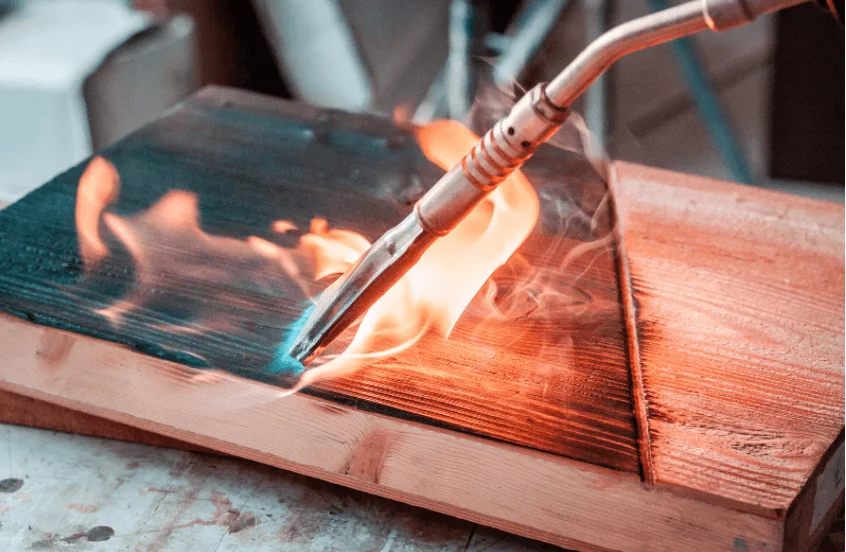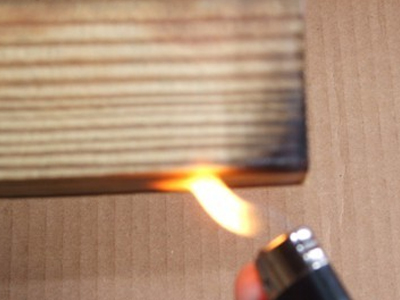How The Plywood Are Made Fire Resistant?: Fire is one of the natural elements, yet it is shown in the adverts that through fire-resistant plywood, certain a firm can make a stand against these natural forces. This innovative material is widely used as a construction material that combines the aesthetic appeal of natural timber with safety functionality for protection against one of the most destructive natural disasters, fire. When it comes to durability and safety in construction, fire-resistant plywood has become the ultimate option that architects and builders turn to to meet the increasing necessity for more fire-resistant building materials. Why It is crucial to know How the plywood are made fire resistant is very important for anyone who wants to enhance the fire safety of his/her construction projects.
As a highly important material, fire-resistant plywood also is composed of components and treated by certain processes to not only make the space more beautiful but also reduce fire threat. Manufacturers use advanced approaches, including chemical treatments, and unique solutions to enhance plywood’s fire resistance to give people an opportunity to flee and help firefighters fight the fire. Anyone interested in creating safer conditions in homes, workplaces, and public areas must understand how this amazing material is produced and what it has to offer.

Understanding Plywood
Plywood is an artificial product manufactured by layering of thin layers of wood known as veneer. These layers are placed accordingly with their grain direction perpendicular to one another and this gives plywood its strength and rigidity. Nowadays, based on the intended use, plywood can be made using either softwoods or hardwoods The two main types of plywood are softwood and hardwood.
Importance of Fire Resistance in Plywood
Fire resistance is one of the essential characteristics that are looked for in a material in the construction of buildings, particularly in buildings for human occupation and other commercial activities. Fire-resistant materials like plywood can slow the fire growth rate, ensure that the building structure is protected from fires, and in the process give the people inside time to evacuate and give the firefighters time to arrive. Building codes often require specific fire ratings for materials used in high-risk areas, making fire-resistant plywood essential for compliance.
Explore Methods of Making Plywood Fire Resistant
Ways of creating fire resistance in plywood sheets are crucial for today’s structures. These solutions include chemical treatments and plywood products enabling to minimize of fire hazards and meeting established standards. It is crucial to know how the plywood are made fire resistant for anyone interested in the construction of safer and more long-lasting structures.

Specialized Plywood Products
Manufacturers also produce fire resistant although they make the ones that have been fashioned to meet particular fire ratings. These products can have a higher percentage of fire – retardants and can use some specific processes of production.
- Type A Fire-Retardant Plywood: This plywood is chemically treated for fire resistance and has a rating that qualifies it for use in buildings that require fire-resistance ratings.
- Type B Fire-Retardant Plywood: This plywood is manufactured for buildings with moderate fire hazards expected and has a relatively low fire resistance when compared to Type A.
Chemical Treatment
The most frequent process of how the plywood are made fire resistant is chemical treatment which increases the fire-resistance of plywood. This includes the treatment of the wood with chemical compounds that reduce the effect of fire on it. These chemicals can be either:
- Surface Treatments: These are laid on the surface of the plywood by direct application. It forms a coat that can retard ignition and also check the propagation of flame.
- Pressure Treatments: In this method, the plywood is subjected to a pressure chamber in which fire retardant chemicals are injected deep into the plywood fibre. This will make the treatment to be more effective as well as being long-lasting.
Some common fire-retardant chemicals used in this process include:
- Ammonium Phosphate: This is one of the most often used fire retardants which operates through thermo-degradation, producing carbonised layers of chars and in the process, evolving water vapours that counter-ignite wood.
- Borates: Boron compounds can halt flame and also check fungal growth so they can be used as fire retardant and for pest control.
Laminating with Fire-Resistant Materials
Another way of improving the fire resistance capability of plywood is by laminating it with fire-resistant materials. These laminates can include:
- Mineral-Based Panels: These are produced from materials such as magnesium oxide which have very good qualities of heat proofing and fire resistance. When applied to plywood, they greatly enhance its fire resistance characteristics If laminated onto plywood, they enhance the features of fire resistance.
- Glass Fiber Reinforcements: Fibres that have been produced from glass can be included in the layers of plywood, and since glass does not burn it can add to the insulation against fire and increase the general strength of the material.
Fire resistance adhesives
The adhesives also can influence the fire resistance of the manufactured plywood. High heat-resistant adhesives are designed to stick well in high temperatures without coming loose. This is even more crucial especially during a fire because it results in adhesive failure which can cause structural failure.
Design Considerations
The concept of fire resistance can also be an attribute of the design of plywood products. For instance, plywood with thick laminations or extra plies will offer more thermal inertia which slows the rate of heat flow. Manufacturers can also find ways on how veneers can be placed optimally to enhance the fire resistance of the end-product.
What are the Various Benefits of Fire-Resistant Plywood?
Fire resistive plywood offers fundamental features which if incorporated enhance building safety and efficiency. Here are some key benefits:

- Enhanced Safety
The advantages of using fire-resistant ply-wood are getting improved and the first one is in the aspect of safety. It assists in gradually spreading the flames, and if enforced, can minimize the impacts of fire in general houses, and business premises.
- Compliance with Building Codes
Employing fire-resistant plywood in construction makes it easier for builders and contractors because most areas have set laws and codes of construction that meet certain fire standards.
- Insurance Benefits
Fire-resistant material used in constructing buildings can also have a hint of the insurance cost since some insurance companies provide a bonus for properties which have a less risk of fire.
- Longevity and Durability
Fire-resistant treatments can also enhance the durability of plywood, making it more resistant to other forms of damage, such as moisture and insect infestations. This longevity translates into cost savings over time, as the need for repairs or replacements is reduced.
- Versatility in Applications
Fire-resistant plywood can be used in various applications, including interior partitions, ceilings, flooring, and furniture, allowing builders and architects to maintain design flexibility while prioritizing safety.





